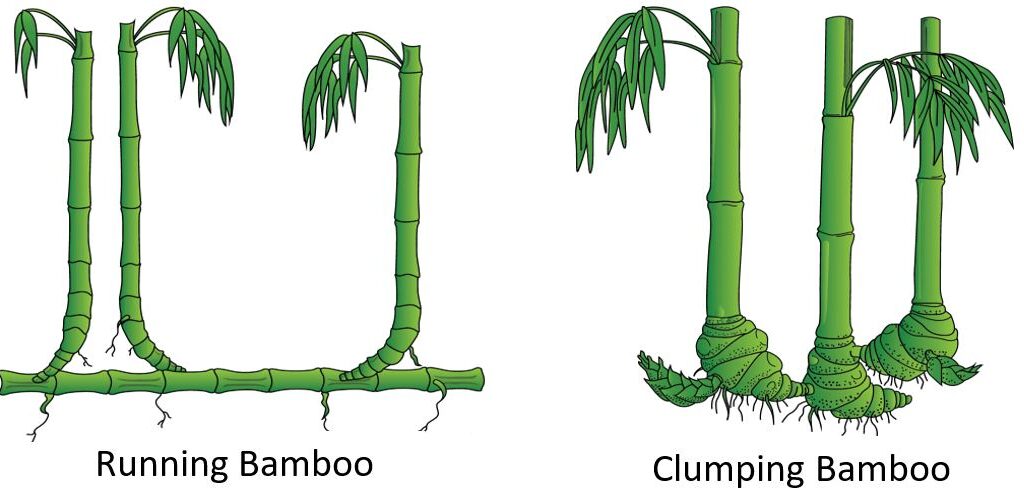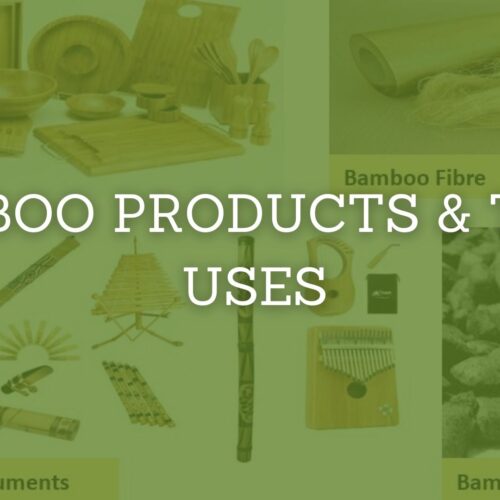Many times people discuss about bamboo & they talk about how does bamboo grow. Bamboo is renowned for its rapid growth and height, the strength of spread, and extreme sustainability. However, some of the bamboo’s properties remain a mystery. For example, how long does bamboo live is an interesting question that a reader or customer always wants to know.
Let’s have a look at this article and after reading you might have an idea of the questions like how long does bamboo live? We have also covered some frequently asked questions in the end of the article regarding the life span of bamboo.
Bamboo is a perennial grass. That means it lives every year, instead of dying off at the end of the year like annual grasses like wheat and corn. Most bamboo species live for decades, some over 100 years. All or nearly all bamboo seeds are unipotent, meaning they bloom once and then die. But for Phyllostachys bambusoides, these bamboos can take 50, 60, or even 120 years to flower. Some types of bamboo can flower several times and continue to grow. The biggest challenge for most gardeners is keeping it under control. Bamboo is strong. It grows quickly, spreads widely and lives for a long time. If you want a plant that grows in your garden and is full of vitality and greenery, few things can beat bamboo. Conversely, if you are waiting for your neighbor’s bamboo to grow old and die, don’t hold your breath.
Individual culms age and die after 5 or 10 years, but the plants themselves live as long as anything else in the garden. As the bamboo grows and spreads, new culms crowd out the old ones. For the health and appearance of the plant, it is recommended to prune some of the old canes from time to time.
Table of Contents
- Bamboo life Cycle and Its Flowering
- Video Explanation: Bamboo Farming
- When will the bamboo die?
- Life Span of Bamboo Culms
- Bamboo for long life
- The robust rhizomes of bamboo
- Related Articles
- FAQs: Frequently Asked Questions
Bamboo life Cycle and Its Flowering

For most bamboo species, the most important factor determining longevity is the flowering cycle. And bamboo flowering is certainly one of its most mysterious properties. And it varies greatly by species.
When we think of bamboo, we imagine its long, elegant stems. The color of bamboo is a deep green, sometimes buttery yellow, and maybe even striped. And imagine this dense foliage of delicate green foliage. Branches sway in the wind and leave rustle quietly.
But bamboo flowers probably don’t come to mind. For the most part, the flowers are rather discreet and resemble rye stems more than those we include in spring bouquets.
For the majority of bamboo species, flowering marks the final act of life. They are monocarpic, which means they only bloom once in their life. Like annuals, most grains and vegetables such as bamboo flowers die to seeds. However, these bamboos are not annuals. It can live for decades or more before flowering and seeding.
Phyllostachys bambusoides, also called Japanese tree bamboo, appear to be the longest-lived bamboo species with flowering intervals of 120 years. Botanists and bamboo experts in Asia and around the world continue to study the strange phenomena of bamboo flowers, much of which remains unknown.
One of the most interesting behaviors is social flowering. This means that all members of a given species will flower at about the same time anywhere in the world. This actually indicates a threat to the entire species. This means that droughts or other natural disasters can cause the entire seed to be lost forever if it is not successfully planted by that time.
Other species bloom infrequently, such as the popular Bambusa Oldham. Despite constant research, no one really knows how often or why Oldhamii blooms. It does not occur regularly and many suspect that this type of flowering may be caused by stress.
Bamboos of the genus Fargesia appear to have a very regular and predictable flowering period with a lifespan of 40 to 60 years, depending on the species.
Limited observations of the Sasa genus suggest that some of these small but vigorous plants may actually be flowered many times. While this is highly unusual for bamboo, it is not impossible as the flowering behavior of bamboo is only partially understood.
Video Explanation: Bamboo Farming
When will the bamboo die?
When bamboo blooms and sprouts, it is both a crisis and an opportunity. As mentioned earlier, it is important to successfully replant some of these seeds when each member of the seed sows at the same time.
Mizoram in northeastern India faces an even more immediate crisis. Every 50 years, Melocanna baccifera (local bamboo seed) blooms and seeds, setting off an unlikely chain of events. When this happened in 1959, an unexpected bountiful harvest of bamboo seeds benefited the local rodent population. A sharp increase in food supplies caused rat numbers to skyrocket. But when the bamboo seeds inevitably ran out, hungry rats began raiding the fields and warehouses of human food. The result was a massive famine in that part of India.
In more favorable circumstances, bamboo gardeners who find the plant in bloom should be sure to document the event… Instagram it! This is very rare. More importantly, be sure to collect the seeds when they are fully mature, dry, and ready for harvest.
It’s even possible to cross-pollinate in a small bamboo garden, resulting in new bamboo varieties. How cool would that be? So be sure to save these seeds while the bamboo is in flower.
Life Span of Bamboo Culms
The lifespan of individual bamboo stalks or stalks is actually quite different from the life expectancy of the whole plant. In most bamboo species, the culms live about 5 to 10 years before they lose potency and begin to dry out. At this point they will stop putting out fresh leaves and will also lose some of their color.
Dead posts should be cut back as close to the ground as possible. When dry, cracks are more likely to occur. For the overall appearance and health of the plant, we recommend using a handsaw to remove this dead wood from time to time.
It is also important to remove old culms for carbon sequestration. As the old pipe dies and begins to rot, it releases carbon and methane. For this reason, only properly managed bamboo forests are effective carbon sinks. Bamboo captures and releases bamboo, letting the cycles of nature take its course. By harvesting the mature stems before flowering, the carbon is trapped in the woody biomass and stored in the rhizomes.
Chusquea culeou probably has the longest living culm of any bamboo species. Their life expectancy is estimated at over 30 years. Another long-lived bamboo, Phyllostachys bambusoides Canes, can live up to about 20 years.
Bamboo for long life
Bamboo has various mythological and magical associations with longevity. Many legends of the Far East refer to bamboo as the first form of life. According to these myths, the first man and woman sprouted from the empty space within bamboo sticks. The plant’s importance and prominence in legend and folklore speak to its great strength and endurance.
As farmers and builders have observed for centuries, bamboo stalks can be harvested continuously and the plants stay alive. You can also be sure that structures made of bamboo will last much longer than other primitive structures. Bamboo’s durability lasts from the forest to the construction stage.
And if you try to contain or remove the bamboo plant, it proves to be a staunch enemy, for the true driving force of bamboo’s livelihood lies in its roots.
The robust rhizomes of bamboo

Attempting to shorten the life of bamboo quickly proves not to be so easy. As you cut down the majestic stakes to build fences and huts, their roots become more and more rigid. Dig up these rhizomes with a shovel and you’ll find yourself in the oldest battle of them all: man versus nature.
This is a plant that just wants to live. And these rhizomes show this will to live in a spectacular way.
I would like to divide the approximately 1,500 species of bamboo known to botanists into two general categories. Based on their rhizome system characteristics, they are classified into clumpers and runners. A running bamboo shoots a long, thin rhizome from the center of the plant. You can rip off the culms and dig up any rhizomes you find, but if you miss a few pieces, they will likely grow back.
Clumping bamboo, on the other hand, has a thicker U-shaped rhizome. These rhizomes generally tend to bend upwards to produce new shoots rather than letting the long roots detach from the core. This way they are easier to store and can be easily removed if necessary. Of course, whenever you’re dealing with timber bamboo, removal is no easy task.
Related Articles
Click the below links to read related articles on Bamboo.
FAQs: Frequently Asked Questions
Which variety of bamboo is best?
Taking these criteria into account, Guadua angustifolia (Guadua bamboo) and Phyllostachys edulis (Moso bamboo) are arguably the best bamboo species for construction and industrial use, especially in terms of strength and size.
What type of bamboo is best for the garden?
Moso bamboo (Phyllostachys edulis) is another elegant bamboo for home gardens. These bamboos grow up to 60 feet tall and are considered some of the toughest and tallest bamboos in the world. The culms are very thick and up to 8 inches wide.
5 benefits of bamboo
The high concentration of cellulose in bamboo has been shown to stimulate appetite, prevent constipation, and improve digestion. A low-carbohydrate diet protects against several conditions such as diabetes, high blood pressure, and cardiovascular disease. It has been shown to help improve.
What are the Fastest Growing Bamboo Species?
Some bamboo grows at a speed of 0.00003 km/h. Bamboo is the fastest-growing plant on earth. In fact, the Chinese moso bamboo grows nearly one meter in one day. However, the maximum daily record growth is 121cm by Madake, Phyllostachys reticulata followed by 119cm by Moso Phyllostachys edulis.



